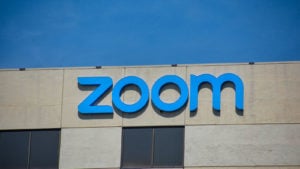Companies rushed to have their employees work from home as governments imposed locked downs. This led to a goldrush in stay-at-home investments, particularly for technology firms. Software companies that enabled virtual meetings and remote working flourished while other sectors floundered.
Now that countries in the developed world have rolled out vaccinations, investors should consider hot post-pandemic stocks that are poised to soar.
The hardest-hit sectors of the pandemic market include tourism and travel. The energy and automotive markets also suffered from lower travel volumes. Looking ahead to the fall, countries with the highest vaccination rates have lower risks of facing hospitalization rates. That makes it a perfect time to buy into post-pandemic stocks, before the market catches on.
Here are 7 hot post-pandemic stocks to consider:
- Airbnb (NASDAQ:ABNB)
- Exxon Mobil (NYSE:XOM)
- General Motors (NYSE:GM)
- Las Vegas Sands (NYSE:LVS)
- Match Group (NASDAQ:MTCH)
- Norwegian Cruise Line (NYSE:NCLH)
- Zoom Video Communications (NASDAQ:ZM)
While the risk of coronavirus variants undermining vaccine impact is present, drug companies are ready to respond. Investors should still reposition their portfolios to maximize their potential returns in a world after Covid-19. So let’s take a closer look at some of the best post-pandemic stocks to buy now.
Post-Pandemic Stocks to Buy: Airbnb (ABNB)

Due to travel coming to a standstill last year, Airbnb’s business growth stalled. Yet it still posted revenue tripling to $1.34 billion from the year prior.
Gross booking value of $13 billion smashed past analyst consensus estimates of $11.19 billion. The firm posted bookings of 83.1 million, double from last year, and recovering to the same pre-Covid levels.
New booking trends will emerge now and after the pandemic. For example, ABNB stock will benefit from higher gross nights booked. The company also introduced new product innovations to adjust to the new ways that people travel.
In February, the company launched Flexible Dates; customers have since run 500 million searches using the tool (from slide 4). That strong interaction illustrates how ABNB continues to meet customer demand.
In Q2, active listings grew. Higher non-urban listings in Europe and North America will drive ABNB’s revenue higher.
On Wall Street, analysts have an average price target of $180 (per Tipranks).
Exxon Mobil (XOM)

Among the many oil and gas companies to consider, Exxon is a widely held stock for post-pandemic investing.
In the second quarter, Exxon posted earnings per share of $1.10 on earnings of $4.7 billion. XOM certainly didn’t hold back on capital and exploration activities either, spending $3.8 billion in the period.
In the second half of the year, Exxon will ramp up key project activities. This includes Guyana, Brazil, Permian and Chemical projects.
Yet despite $9.7 billion in cash flow from operations, Exxon did not resume its stock buyback. This is a mistake.
Exxon could increase shareholder returns by buying back stock. Still, by reducing its debt instead, the firm will have less exposure to the risks of higher interest rates. Besides, the stock is now trading at a 52-week low. Shareholders also get rewarded by a dividend that yields around 6%.
Higher energy demand as travel resumes will lift Exxon’s revenue. Management will sustain robust returns through new projects. The firm has around $4 billion in potential annual earnings from new projects (per slide 19).
General Motors (GM)

In the automotive sector, General Motors is a strong contender in the electric vehicle market. And as workers return to work physically, demand for gas-powered GM vehicles will also rise.
In the second quarter, GM posted revenue of $34.2 billion, recovering from last year’s depressed $16.8 billion in revenue. It earned $1.90 a share, compared to a 56-cent EPS-diluted loss last year. GM expects full-year EPS in the range of $5.12 to $6.12.
Despite a chip shortage and heavy costs from its electrification plans, GM will produce its high demand vehicles first; strong full-size pickup sales will lift average unit sales.
Consumers eager to spend in the post-pandemic world may order GM’s Hummer EV. Companies may buy GM’s BrightDrop EV 600 commercial EV. And in 2022, GM will have an all-electric Cadillac Lyriq SUV.
Chevrolet’s Bold next year is likewise getting good reviews from critics. Strong EV sales will lead to GM raising next year’s forecasts.
Las Vegas Sands (LVS)

Casino stocks slumped over the past few months, with Las Vegas Sands leading the decliners. As tourism recovers, people will visit casinos and stay at Las Vegas Sands’s resorts.
In the second quarter, LVS posted net revenue of $1.17 billion, up from $62 million last year. LVS stock fell because the company posted an operating loss of $139 million.
In the period, LVS announced the sale of Las Vegas real property and operations for $6.25 billion. This will help it lower its debt, which stood at $14.42 billion as of June 30, 2021.
LVS is a pure-play on the pandemic recovery in Asia. While North America’s vaccination rates are good, Asia is lagging, with many Asian countries facing rising infection rates. On the conference call, Chief Executive Officer Rob Goldstein said that China adopts a no-tolerance policy on Covid. So if there is an outbreak, it will be widely reported and the country returns to lockdown.
LVS expects the best-case scenario in the region to be steady business activity among China, Hong Kong, and Macao only.
Match Group (MTCH)

The online dating scene thrived as the lockdown intensified. Now that re-openings allow users to meet in person, Match Group will likely continue to grow.
In the second quarter, Match posted second-quarter revenue of $708 million and up by 27.6% YoY. Adjusted EBITDA of $263 million is an increase of 15% compared to the year ago period.
In the third quarter, MTCH stock should get a lift. The company is guiding revenue of up to $805 million, above the consensus estimate of $765.94 million.
Paying subscribers grew in the double digits for all regions. In the Americas, it grew by 16% to 7.9 million. In Europe, subscribers grew by 13% YoY to 4.33 million. In the Asian Pacific region, it grew by 17% to 2.74 million.
In the near term, Match could post revenue growth above 30% as people seek soulmates online. In the next decade, investors may reasonably expect growth of 15% to 20%.
On Wall Street, the average price target is $175 and ranges from $148 to $190 (per Tipranks).
Norwegian Cruise Line (NCLH)

Investors might be worried by Norwegian’s losses in the second quarter. What really matters are advanced ticket sales, bookings, and pricing trends.
In the second quarter, the cruise line said that 2022 booking and pricing trends are very positive. It is benefiting from pent-up demand. For the full year 2022 period, NCLH will have bookings ahead of 2019 levels. Advance ticket sales were $1.4 billion.
The return to service plan is the biggest near-term catalyst. This starts with a multi-layered health and safety strategy, detailed on slide 4.
The company committed to a 100% vaccination of all guests and crew. Then, it will relaunch all 28 of the company’s vessels embarking within and outside the U.S. by April 2022.
A widespread sell-off could scare investors away from NCLH stock, given its weak balance sheet. As of June 30, 2021, NCLH had total debt of $12.3 billion. It held cash and cash equivalents worth $2.8 billion.
Zoom Video Communications (ZM)

Zoom Video is the hottest post-pandemic stock. The video conferencing firm will grow if countries re-impose a lockdown due to the pandemic. Conversely, companies will start with a hybrid return-to-work model. With a staggered rollout of workers at work, corporations still need to attend video conferences.
If the hybrid work environment is here to stay for the next few years, then Zoom’s revenue will steadily grow. Furthermore, Zoom faces no real competition. Cisco’s (NASDAQ:CSCO) WebEx is too restrictive. Even though it is widely used, Microsoft’s (NASDAQ:MSFT) Teams App has an inferior user experience compared to Zoom.
Last month, Zoom agreed to buy Five9 (NASDAQ:FIVN) for $14.7 billion in an all-stack deal. The acquisition will help Zoom strengthen its presence with enterprise clients. It widens its addressable market as Zoom enters the contact center market worth $24 billion. By paying in stock only, Zoom is taking advantage of the recent share price strength.
Zoom and Five9 have a natural fit. Five9 is already a referral partner of choice for Zoom phone. The two firms are also located in the same state of California.
On the date of publication, Chris Lau did not have (either directly or indirectly) any positions in the securities mentioned in this article. The opinions expressed in this article are those of the writer, subject to the InvestorPlace.com Publishing Guidelines.
